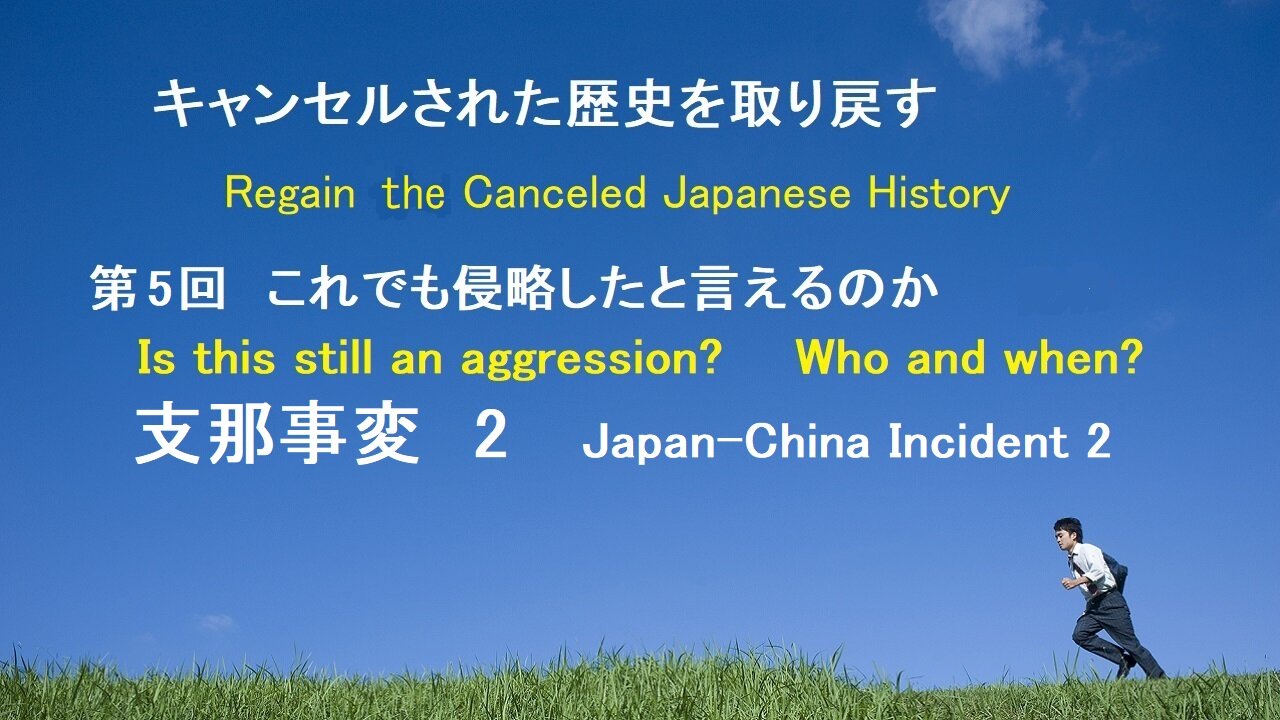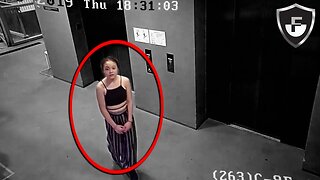Premium Only Content

the 5th lesson of Regaining Canceled History, the second part of the Japan-China Incident.
Hello, everyone. This is the fifth lesson of Regaining Canceled History, the second part of “Is this still an invasion”, the Japan-China Incident. In this lesson, we will talk about what the Comintern is and who did the invasion.
At the very beginning of the table, it says that the 7th World Congress of the Comintern was held in 1935. Here, it says that the main enemies were Nazi Germany, Poland and Japan.
In 1921, the Chinese Communist Party was established, and the following year, the Japanese Communist Party was born as a branch of the CCP. From their point of view, Chiang Kai-shek and the Japanese government were enemies.
This is the Comintern's strategy for world revolution, from Jiyusha's middle school history textbook. I’ll read it..
The Comintern was quick to create the CCP and gave strong leadership to the revolutionary movement. In 1926, when Chiang Kai-shek was in the process of logging in the north, he obtained the following secret document in which Moscow gave instructions.
All methods must be used to induce the exclusion of foreigners by the masses. In order to achieve this goal, each country and the masses must be armedly clashed.
If this can cause interference from other countries, then it should be carried out in any way possible. It doesn't matter if it results in looting or mass slaughter.
A Communist Party member who sneaked into the Northern Expedition's National Revolutionary Army attacked embassies in Nanking in 1927, including Japan,and looted, assaulted, and murdered.
The Communists lobbied the Kuomintang to fight the Japanese military in order to weaken the Kuomintang. This was the main policy for the Communist Party to come to power. This is how Jiyusha explains it.
Originally, the tyranny of the Communists in Nanking in 1927 was called the real Nanking Incident, but it is now hidden.
Japan understood the danger of communism and was wary of it. Chiang Kai-shek also finally understood the danger too and suppressed the CCP, nearly destroying it.
However, the Xian Incident occurred, and Chiang Kai-shek was under house arrest. In exchange for his life, he decided to stop the conquest of the CCP and fight Japan together.
Each of them had their own interests in mind, and in some cases they used ninja to set up scheming operations, just like Daimyous in Japan's Warring States Period.
Ninjas are today's spies, terrorists, and operatives. The Xi'an Incident was a desperate reversal of fortunes for the Chinese Communist Party.
Britain and the U.S. wanted Chiang Kai-shek to unify China, push Japan out of the way, and profit from the laying of railroads. It is clear that the Comintern also wanted to unify China, which was in a state of military cliques, with the Communist Party.
From both sides, Manchukuo may have looked like a treasure trove. Mao seems to have thought that as long as he could steal Manchuria, the success of the revolution would be manageable.
Textbooks other than Jiyusha do not explain the Comintern at all, in order to give students the impression that Japan invaded.
And the Marco Polo Bridge Incident was also described as a skirmish between the Japanese and Chinese armies that developed into the China Incident and the Sino-Japanese War under the impression that Japan had invaded.
It is believed that Communist Party spies who had infiltrated the KMT army fired several live rounds at the Japanese troops. At this time, the Japanese army was in the middle of an exercise, but it was an exercise without using live ammunition.
After the Boxer Rebellion in 1900, Japan, like other powers, signed the Beijing Protocol and stationed 5,000 troops around Beijing to protect diplomats and their families, etc.
Under the protocol, live-fire exercises were prohibited. Since the local ceasefire agreement was signed at Rohgok Bridge, the full-scale war between the Japanese and Chinese armies, which the Comintern wanted, did not start easily.
At first, there were only about 5,000 Japanese troops in the Beijing area and a thousand and a few hundred in the Shanghai concession.
And as I told you last time, Japan does not want to start a costly war by investing in Manchuria and Korea.
So the Comintern, Britain and the United States came up with various means of provocation. One of the most tragic incidents was the Tungchow massacre.
This is also one of the massacre that other textbooks do not write about, but as Japanese, we should not forget. It was an incident in which 225 Japanese, including women and children, were slaughtered by Chinese students and security forces.
This incident had been planned for two years in order to provoke Japan. Despite suffering so much damage, Japan did not effectively report the damage to the world at that time.
In the same way, the Japanese government's neglect of the political propaganda of the Nanjing Massacre and the comfort women, which never existed and were spread around the world, is now greatly damaging the national interest.
If Britain and the U.S. had behaved wisely at that time, there would be no CCP, no atomic bombings, no abductions, no oppression of Tibet, Uyghur and Inner Mongolia, Manchurians would speak Manchu, and Taiwan and the Senkakus would be at peace.
I wonder if Britain and the United States are now aware of their responsibility, and are beginning to encircle China.
This concludes the fifth article. Good bye, everyone.
-
 27:31
27:31
True Crime | Unsolved Cases | Mysterious Stories
2 days agoThe Hong Kong Schoolgirl Mystery – 5 Mysterious Unsolved Cases (Part 8)
171 -
 7:19
7:19
China Uncensored
22 hours agoChina is DONE in the South China Sea
2.35K11 -
 LIVE
LIVE
Joe Donuts Live
3 hours ago🟢 Loot Rats Unleashed: Arena Breakout Chaos! | Joe + Tony + Vlad
464 watching -
 30:37
30:37
Degenerate Plays
14 hours agoThis College Is Out Of Control - GTA Online : Part 9
40 -
 16:28
16:28
Mrgunsngear
2 days ago $0.49 earnedBeretta 92XI SAO Sabbia Review - A Few Surprises
3.46K5 -
 1:48
1:48
Memology 101
1 day agoThis aged like milk for Tish James...
6846 -

Boxin
2 hours agoGrounded! part 5
8.88K -
 43:37
43:37
American Thought Leaders
17 hours agoAfter 9 Years of Investigation, Here’s What I Uncovered | John Solomon
3.68K7 -
 1:02:27
1:02:27
The Heidi St. John Podcast
2 days agoWhen Government Becomes God with Bill Jack
156 -
 42:16
42:16
The Bryce Eddy Show
2 days ago $0.01 earnedCathy Meehan: Do Kids Really Need Well-Child Visits?
50